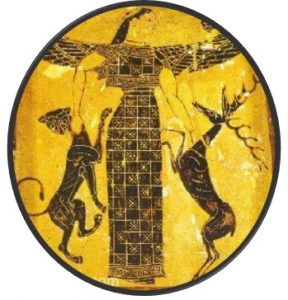Description
The Vinča Culture – Europe’s biggest prehistoric civilization – point to a metropolis with a great degree of sophistication and a taste for art and fashion
Long before the flourishing of Greece and Rome, even earlier than the first cities in Mesopotamia and Egypt, at the downstream of Danube River lived a nation ahead of its time in trade, arts and craftsmanship. During its efflorescence the “Old European” civilization had been one of the most advanced cultures in the world. In his book “The mysteries of the Danube Civilization” Harald Haarmann proves that the Balkans were inhabited by the civilization that developed the first written language. Haarmann calls this culture “Old European”. The center of the first civilization, in known World, was located in Serbia. The town of Vinča itself was just one of several metropolises, with others at Divostin, Potporanj, Selevac, Pločnik and Predionica.
Vinča culture
In 1908, the largest prehistoric Neolithic settlement in Europe was discovered in the village of Vinča, just a few miles from the Serbian capital Belgrade, on the shores of the Danube. Vinča was excavated between 1918 and 1934 and was revealed as a civilization in its own right. Indeed, as early as the 6th millennium BC, three millennia before Dynastic Egypt, the Vinča culture was already a fully fledged civilization. A typical town consisted of houses with complex architectural layouts and several rooms, built of wood that was covered in mud. The houses sat along streets, thus making Vinča the first urban settlement in Europe, but being far older than the cities of Mesopotamia and Egypt. And the town of Vinča itself was just one of several metropolises, with others at Divostin, Potporanj, Selevac, Plocnik and Predionica.
Archaeologists concluded that “in the 5th and early 4th millennia BC, just before its demise in east-central Europe, 'Old Europeans' had towns with a considerable concentration of population, temples several stories high, a sacred script, spacious houses of four or five rooms, professional ceramicists, weavers, copper and gold metallurgists, and other artisans producing a range of sophisticated goods. A flourishing network of trade routes existed that circulated items such as obsidian, shells, marble, copper, and salt over hundreds of kilometres.”
The Vinca culture flourished from 5,500 (2) to 3,500 BC (4) on the territories of what is now Bosnia, Serbia, Romania and Macedonia. It got its name from the present-day village of Vinca, 10 km east of Belgrade on the Danube river, where over 150 Vinca settlements have been determined. There is no evidence of war or defences in the townships, and it appears that the Vinca were a peaceful society combining low-level agriculture with foraging and trade. They produced the first known European examples of a 'proto'-script and were the first people in the world known to smelt copper. They existed in a similar state for almost 2,000 years, following which they appear to have dispersed around the Mediterranean and Aegean.
Vinča settlements were considerably larger than any other contemporary European culture, in some instances surpassing the cities of the Aegean and early Near Eastern Bronze Age a millennium later. The largest sites, some more than 300,000 square metres may have been home to up to 2,500 people. (2) We are told that they lived in spacious housing and separated their dead in nearby necropolis. They had workshops, which means skilled labour. They worked with several styles of pottery and had their own particular artistic fingerprint which is seen in both early Cretan and Sumerian cultures, which rose following the demise of the 'Old Europe' heartland.
They lived in houses which had very complex architectural layouts and several rooms. The houses faced northeast – southwest and were separated by streets. Vinca people had stoves in their houses, preceding the Romans in using of these devices. They used special holes only for rubbish, and had the same tradition as we have, to bury people in cemeteries.
Among unearthed artifacts, there have been found a large number of figurines made of clay and others artifacts depicting worshipped deities and women in miniskirts, short tops, wearing jewellery. It is hard to believe that women that lived several millennia ago wore miniskirts, unless, the cult of Mother Goddess was very widespread and reached both south-east part of Europe and ancient India. Similar, made of ceramic clay, figurines of Mother Goddess, were found in excavations in Mohenjo-Daro, located along the Indus River in ancient India (present-day Pakistan). This would mean that women wore modern cloth at least 7,500 years ago!
The Vinca Culture – Europe’s biggest prehistoric civilization – point to a metropolis with a great degree of sophistication and a taste for art and fashion.
The first known form of a writing system
The first known form of a writing system anywhere in the world was created in the Vinča culture, with about 700 characters and symbols, mainly carved in pottery goods. Various styles of zoomorphic and anthropomorphic figurines are hallmarks of the culture, as are the Vinča symbols, which some conjecture to be an early form of proto-writing. Some of the historians and etymologists nowadays believe that Vinča language was actually at the same time proto-Serbian language, but the future analysis and further findings will certainly put more light on it. They certainly represent the earliest form of writing ever found and predating ancient Egyptian and Sumerian writing by thousands of years.
